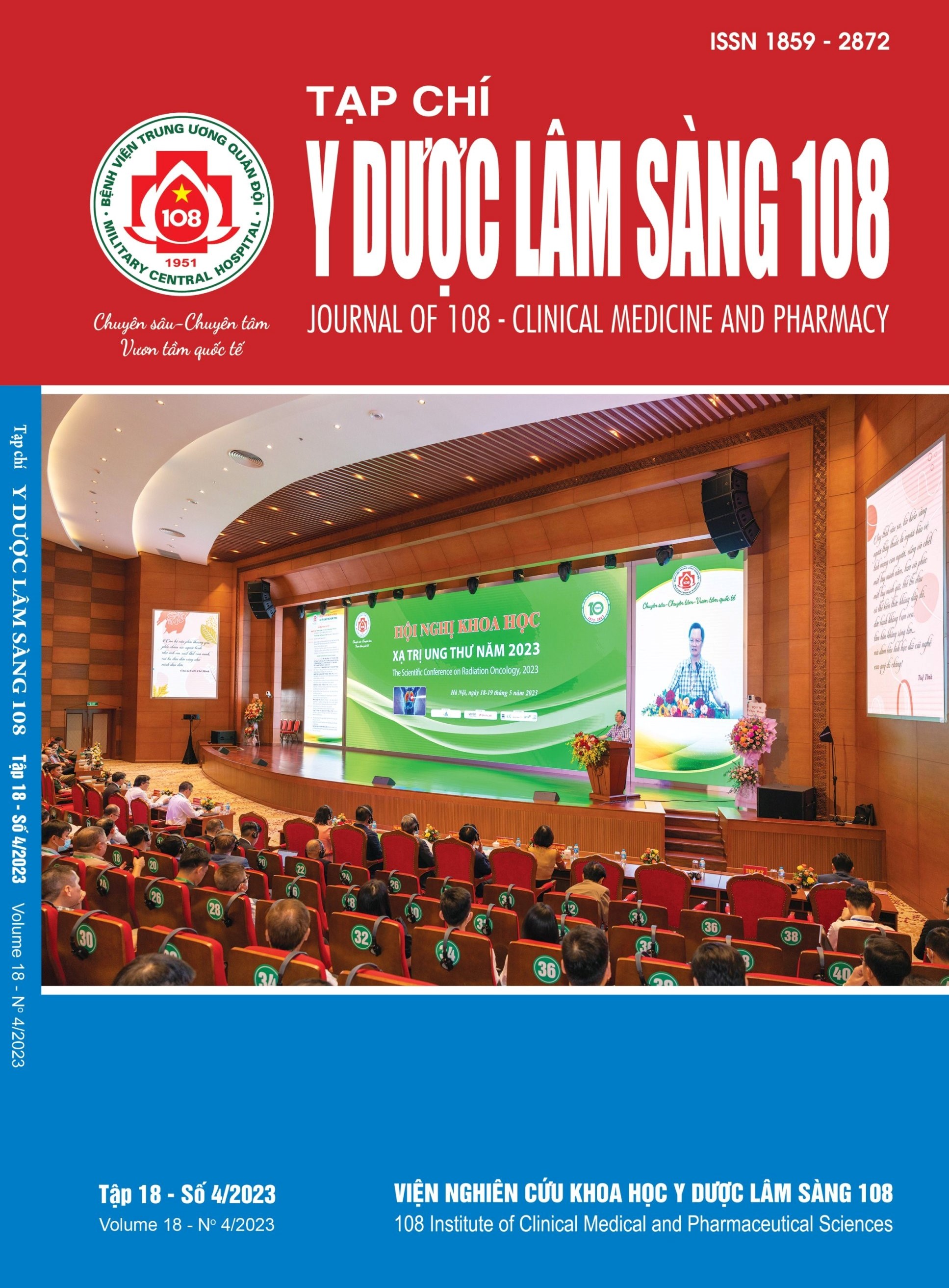Effectiveness of Lactobacillus acidophilus in comparision with metronidazole in treatment of bacterial vaginosis at HCMC Hospital of Dermato Venereology
Main Article Content
Keywords
Abstract
Objective: To compare the effectiveness, describe the complications and evaluate the recurrence of treatment with Lactobacillus acidophilus in comparision with metronidazol in bacterial vaginosis at Ho Chi Minh City Hospital of Dermato Venereology. Subject and method: A clinical trial of 65 patients with bacterial vaginosis randomized into three groups. Group 1: 24 patients treated with metronidazole 1g/day for 7 days in combination with Lactobacillus acidophilus intravaginally applied 1 tablet/day for 6 days. Group 2: 25 patients received therapy of metronidazole 1g/day for 7 days. Group 3: 16 patients treated with Lactobacillus acidophilus intravaginally applied 1 tablet/day for 6 days. Patients will be scheduled for follow-up after 2 weeks, 1 month and 3 months for evaluation. Result: Group 1 had good response rate and response rate higher than group 2, this difference was not statistically significant (p=0.576). In contrast, group 1 and group 2 had a statistically significant higher response rate than group 3 with p=0.004 and 0.03, respectively. Similarly, patients in group 1 and group 2 had a higher satisfaction rate than group 3. The cure time of group 3 was 3.19 ± 1.377 weeks, statistically significantly longer than group 1 and group 2, which were 2.13 ± 0.612 weeks and 2.4 ± 0.816 weeks, respectively. Gastrointestinal complications were common in the metronidazole group. Patients treated with Lactobacillus acidophilus often experience vaginal pruritus, vaginal burning and extensive vaginal discharge. Combination therapy reduced recurrence more than single therapy. Conclusion: The treatment of bacterial vaginosis with the combination of antibiotics and probiotics had a higher response rate than antibiotics alone, but it was not enough to make a statistically significant difference. However, combination therapy reduces short-term and long-term recurrence rates.
Article Details
References
2. Donders GG, Van Bulck B, Van de Walle P, Kaiser RR, Pohlig G, Gonser S, Graf F (2010) Effect of lyophilized lactobacilli and 0.03 mg estriol (Lactobacillus acidophilus(R)) on vaginitis and vaginosis with disrupted vaginal microflora: A multicenter, randomized, single-blind, active-controlled pilot study. Gynecol Obstet Invest 70(4): 264-272.
3. Muzny CA and Kardas P (2020) A narrative review of current challenges in the diagnosis and management of bacterial vaginosis. Sex Transm Dis 47(7): 441-446.
4. Russo R, Karadja E, and De Seta F (2019) Evidence-based mixture containing Lactobacillus strains and lactoferrin to prevent recurrent bacterial vaginosis: A double blind, placebo controlled, randomised clinical trial. Benef Microbes 10(1): 19-26.
5. Tan H, Fu Y, Yang C, Ma J (2017) Effects of metronidazole combined probiotics over metronidazole alone for the treatment of bacterial vaginosis: A meta-analysis of randomized clinical trials. Arch Gynecol Obstet 295(6): 1331-1339.
6. Wang Z, He Y, and Zheng Y (2019) Probiotics for the treatment of bacterial vaginosis: A meta-analysis. Int J Environ Res Public Health 16(20): 3859. doi: 10.3390/ijerph16203859.
 ISSN: 1859 - 2872
ISSN: 1859 - 2872
